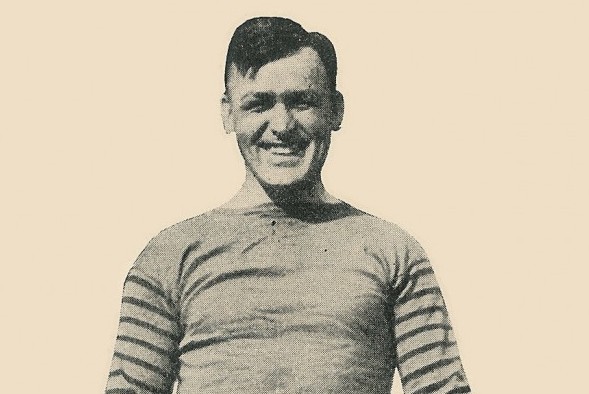
By David Eskenazi and Steve Rudman
On Nov. 27, 1920, the University of Washington dedicated its new $600,000 football stadium in front of a not-quite capacity (30,000) crowd of 24,500 spectators. Although the new facility drew raves from customers and media alike, Dartmouths Hanover Hoard spoiled the christening, routing L.B. (Stub) Allisons Sun Dodgers 28-7.
The third man to coach UW football in the four years since the Gil Dobie era (1908-16) ended sourly with Dobies absurd ouster (he had compiled a 58-0-3 record), Allison didnt survive the loss to Dartmouth, which placed a grim cap on a 1-5-0 season.
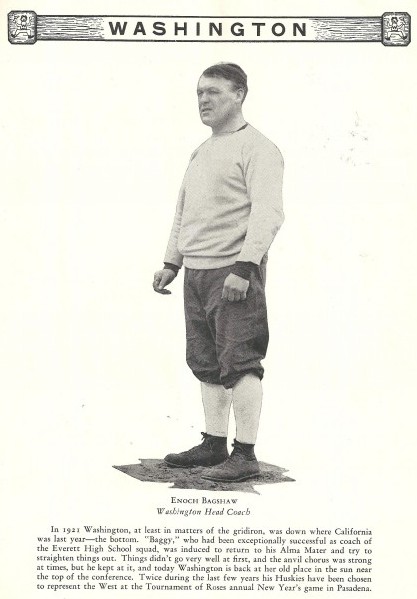
After dismissing Allison, who went on to coach at California from 1935-44, UW officials developed elaborate plans to rejuvenate the football program (the plans included abandoning Sun Dodgers and the alternative Purple & Gold and adopting Huskies), deciding that it needed a new image and a head coach with a national profile.
To that end, UW officials announced that they would pay the new man $10,000, more than double the national average, and $6,000 more than Allison’s salary.
Two men quickly surfaced as leading candidates, Elmer (Gus) Henderson and Enoch Bagshaw, both of whom, ironically, had once traipsed the halls of Broadway High School.
An Ohio native and graduate of Oberlin College, Henderson had launched his coaching career at Broadway (converted into Seattle Central Community College after World War II) during World War I, before becoming head coach of the USC Trojans in 1919.
While the UW struggled to a 1-5 record under Allison in 1920, Henderson finished that year 6-0, USCs first perfect season (minimum of three games.)
Bagshaw, a Broadway High graduate, never coached at the collegiate level, but had amassed a rather fantastic record over a dozen years at Everett High School. In addition, he had been a five-time letterman quarterback-end-halfback at UW and, if hired, would become the first former player to coach the schools football program.
In the weeks before UW made its choice, quite a squawk developed over which man was best suited for the task. Despite Bagshaws local record of achievement, most influential UW alums favored Henderson, who ended the debate by accepting a multi-year contract to remain at USC.
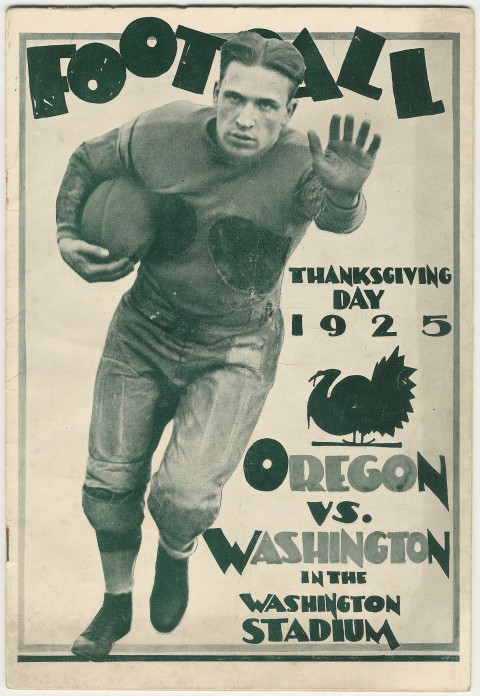
Most who had backed Hendersons candidacy refused to throw their support behind Bagshaw, who wound up getting one of the rawer deals ever to befall a UW head coach.
Born in Flint, Wales, in 1884, Bagshaw arrived in Washington with his parents in 1892.
After graduating from Broadway, Bagshaw entered the UW in the fall of 1903, intent on becoming a mining engineer. Bagshaw financed his education by delivering newspapers and milking cows.
After leaving UW — Bagshaw is credited with throwing the first completed forward pass in school history on Oct. 10, 1906 in a 5-0 victory over the U.S.S. Philadelphia (touchdowns counted for five points) — Bagshaw pulled a two-year hitch as a Snohomish County engineer, surveying roads, then entered the teaching profession as a science instructor at Everett High, which also assigned the dual duties as head football and basketball coach. Everett got the most successful football coach it would ever get.
Under Bagshaws direction, Everett lost just one game in 12 years (1909-20), that by a single point. His teams amassed a collective victory margin of 3,001-375, and his last two clubs (1919-20) won consecutive national high school championships.
The 1920 Everett team went a long way to ensuring Bagshaws hiring at UW a year later. On Oct. 23, playing what amounted to an all-comers schedule, Everett routed the UW freshman team and shut out St. Martins College 19-0. According to the Everett Daily Herald, the visitors (St. Martins) were stunned by the strength of Everetts attack.
After Everett blasted The Dalles, OR., 90-7 for what newspapers described as the interstate championship, Chehalis backed out of its scheduled game against Everett, alleging that Everett had violated the spirit of sportsmanship with such a lop-sided victory.

Bagshaw subsequently had difficulty lining up opponents, but talked East High School of Salt Lake City into a game in Everett on Thanksgiving Day — after agreeing to pay East High $2,500 in traveling expenses.
Everett erased East, widely considered one of the premier prep programs in the country, 67-0, a result that got several East Coast schools interested in taking on Everett. Bagshaw ultimately settled on East Technical High School of Cleveland, arranging the match for Jan. 1, 1921, in Everett.
Everett dispatched the Ohio team 16-7, winning the highly unofficial United States High School Football title.
Every college on the West Coast coveted Everetts players, particularly a back named George Wilson, and none more so than Washington, which recognized that in hiring Bagshaw it would have a significiant advantage in recruiting those players.
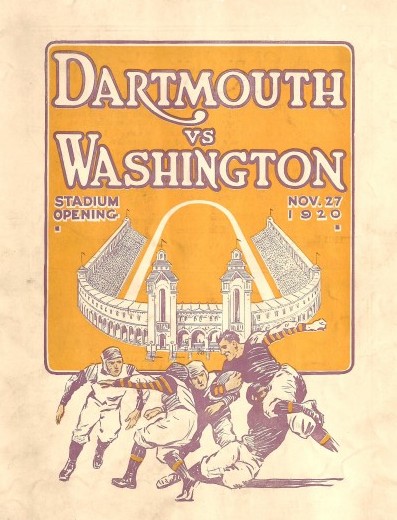
Arriving at UW, Bagshaw discovered that Allison had bequeathed him such a lame program that in his first year (1921) Bagshaw literally had to beg students to turn out.
Given the circumstances, UWs final record of 3-4-1, which included a landmark 72-3 loss to California, Bagshaw had pulled off a remarkable turnaround.
As UW officials had hoped, Bagshaw lured many of the Everett players who had starred on the schools championship teams, including Fred Westrom, Roy Sievers, George Guttormsen, Chalmer Walters, Lester Sherman and the Wilson brothers, Abe and George. They would form the crux of the best teams produced at Washington between Dobie and Jim Owens (1957-74).
In 1922, Washington shut out its first three opponents en route to a 6-1-1 record, but a 45-7 loss to Cals Wonder Team essentially meant that Cal would receive the Rose Bowl invitation (a committee selected the games participants in those days).
But Cal snubbed the invite, leaving UW one of three Pasadena candidates, along with USC and Oregon. Had UW not played to a 3-3 tie with the Ducks on Nov. 30, it might have played in the first Rose Bowl in school history. USC went instead.
Washington blanked seven of its first eight foes in 1923, including a 22-0 victory its inaugural matchup with USC (first UW game ever broadcast on the radio), but again couldnt overcome Cal in Berkeley, losing 9-0.
In a move that would cause mass bewilderment today, Cal, the Pacific Coast champion, again turned down the Rose Bowl invitation, leaving 10-1-1 Washington in the default position to play opposite Navy. A 14-14 tie with the Middies sent the Bagshaw era into full flower.
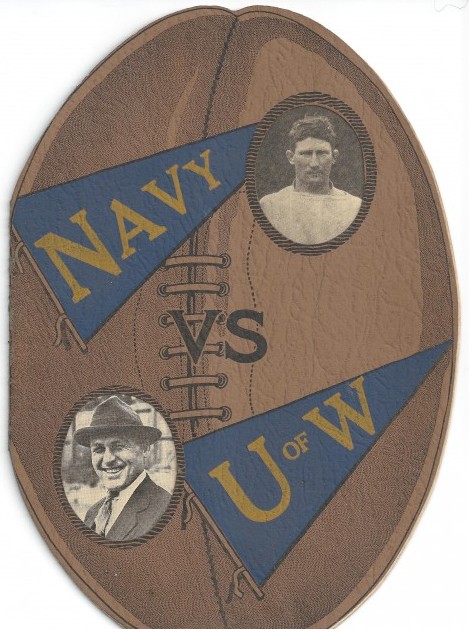
The Huskies might have received another Rose Bowl invitation after the 1924 season, when UW outscored its first five opponents 229-7 (a 355-24 margin for the season), but a 7-3 loss to Oregon (punting from his end zone, George Wilson hit the crossbar of his own goalpost and Oregon recovered for a TD) and a 7-7 tie with Cal sent the Rose Bowl bid Stanfords way.
As a consolation, Walter Camp, who had been selecting All-America squads since 1897, named Wilson to his second team after traveling from New York to Seattle by train specifically to see him play. It marked the first time a Husky had been accorded such an honor.
Bagshaws 1925 team still ranks among the greatest in school history.
The Huskies went 10-0-1 (tied Nebraska in UWs first-ever game east of the Rockies), outscored 11 regular-season opponents 461-39, and recorded six shutouts, including a 108-0 wipeout of Willamette in a game that UW led 28-0 before Willamette ran an offensive play (after each UW score, the Willamette captain curiously elected to kick off rather than receive).
The most notable and anticipated game on UWs 1925 schedule occurred on Nov. 7 when the Huskies hosted Pop Warners Stanford Cardinal, featuring Ernie Nevers.
Wilson threw for a touchdown and combined with Elmer Tesreau to knock Nevers unconscious when he tried to score late in the game from the UW three-yard line. Final: UW 13, Stanford 0.
The Rose Bowl selection committee had no misgivings about inviting the Huskies to play in Pasadena, but Washingtons players, not wishing to spend Christmas away from home, voted not to attend not once, but twice. They relented only at Bagshaws urging.
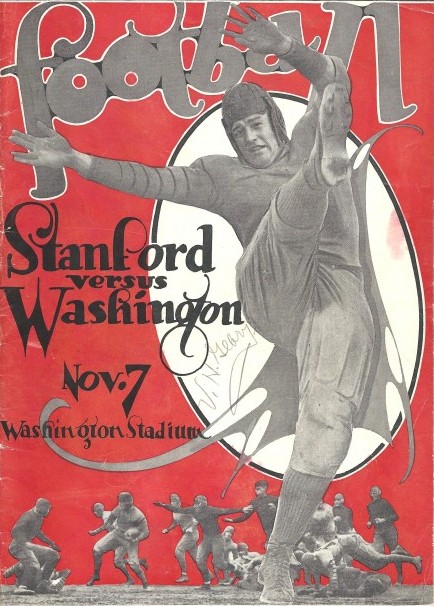
Rose Bowl officials had hoped to match Washington against Dartmouth, the undefeated national champion, but the Hanovers declined.
So did Princeton and Colgate, forcing Rose Bowl officials to turn to Alabama, which, in accepting the invitation, became the first southern team to play in a bowl.
Washington might have defeated Alabama — in 1969, the game was voted one of the 10 best college football games ever played — if Wilson hadnt spent much of the time on the sidelines nursing an injury.
With Wilson in, Washington gained 317 yards and scored all 19 of its points. With Wilson out for 22 minutes, Washington gained only 17 yards and yielded 20 to future movie cowboy Johnny Mack Browns Crimson Tide.
After the game, Damon Runyon (1884-1946) described Wilson as one of the finest players of this or any other era, adding that, He was a one man football team. George Wilson, the slashing back of the Washington team, was splashing the Crimson Tide at will. Then he got hurt.
Wilson had a fabulous career with 38 touchdowns, still the No. 1 mark in school history (Joe Steele scored 37, Hugh McElhenny 35, Napoleon Kaufman 34).
In the 34 games he played, Washington produced 18 shutouts and allowed 10 or more points only five times. Wilson made consensus All-America as a senior, the first UW player so honored.
Remarkably, Wilson scored 14 of his 38 touchdowns as a senior during a season in which he suffered from a variety of ailments, including food poisoning, cracked ribs, pneumonia and, according to the UWs all-time sugar daddy, Torchy Torrance, more than that.
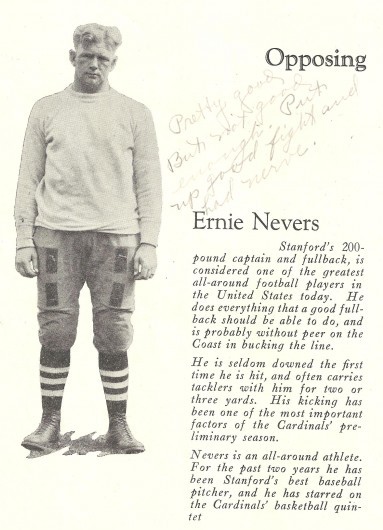
George went to Alaska in the summer of 1925 and earned good money with the fishing fleet, Torrance wrote in his book, Torchy! In his senior year he came back from Alaska with a very bad social disease, and every now and then he would have to drop out of a game for a minute or two while he threw up under the grandstand.
“That didnt seem to affect his performance, however, and about the only time he wasnt on the field either on offense or defense was when he was momentarily sick.
Between Washingtons 14-14 tie with Navy on New Years Day, 1924, and its 20-19 loss to Alabama on Jan. 1, 1926, Washington established records that may endure for another century. In fact, its arguable that no Husky teams simultaneously played both sides of the football better than the UW clubs inspired by Wilson.
During his tenure, Washington twice led the nation in scoring, averaging 33 points per game, and had outbursts of 50 or more points six times and 60 or more five times, with a single-game high of 108 in 1925.
Any time a team piles up points at the rate Washington did during Wilsons era, the temptation is to suggest its strength is offense.
In the case of the 1923-25 Huskies, their strength was defense. During that span, Washington surrendered just 141 points in 34 games and registered an astonishing 18 shutouts. The 1924 club allowed only 24 points in 12 contests. Overall, the Huskies allowed 4.1 points per game during Wilsons three seasons.
Unfortunately for Bagshaw, Wilsons departure marked the start of a slow creep south for the head coach, despite the fact that Bagshaw remarkably replaced Wilson with another consensus All-American, Chuck Carroll, who led the Huskies to records of 8-2 (1926), 9-2 (1927) and 7-4 (1928) with 32 touchdowns (a school-record 17 in 1928).
(The UW has two consensus All-America running backs in its 121 football seasons. The two, Wilson and Carroll, came in a five-year span between 1923-28.)
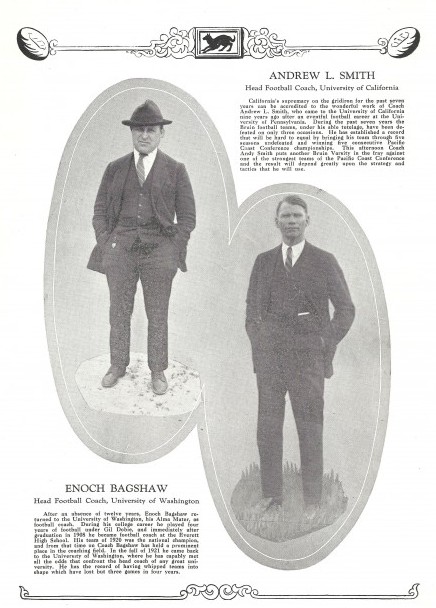
Despite winning records, Bagshaw didnt engender much love: respect, yes, not love. Bagshaw viewed himself as an authority figure and, as such, disdained camaraderie.
He didnt buddy-buddy with his boys, halfback Harold Patton (Patton started the 1926 Rose Bowl game as a halfback along with George Wilson) told an interviewer shortly before his death.
“He was a very dedicated football coach. He really lived the game, so there wasnt much personal association with him . . . He was a quiet man. He wasnt a man to yell at you or anything of that kind.
“Just strictly dedicated to the game itself. And he wanted everybody else to be the same way. He was also inspiring. He pepped you up. He got you ready. I had a lot of respect for him.
But Bagshaw had many detractors and began to lose the grip on his job in 1928 when the Huskies lost to Oregon, Oregon State, Cal and Stanford in a five-week span after they had started out 5-0.
Although Washington finished 7-4-0, a wild howl went up for Bagshaws scalp as the season came to a close. Over the winter, a student faction, abetted by prominent alumni, attempted to force Bagshaw to resign even though he had not had a losing record since 1921. Bagshaw refused.
On Jan. 17, 1929, by a vote off 11 to 3, the board of control of the Associated Students of the University of Washington adopted a resolution that Bagshaw be relieved of his coaching duties. But the schools faculty senate overturned it, UW president Dr. Matthew Lyle Spencer declaring that Washington would have to honor Bagshaws contract, which ran through 1932.
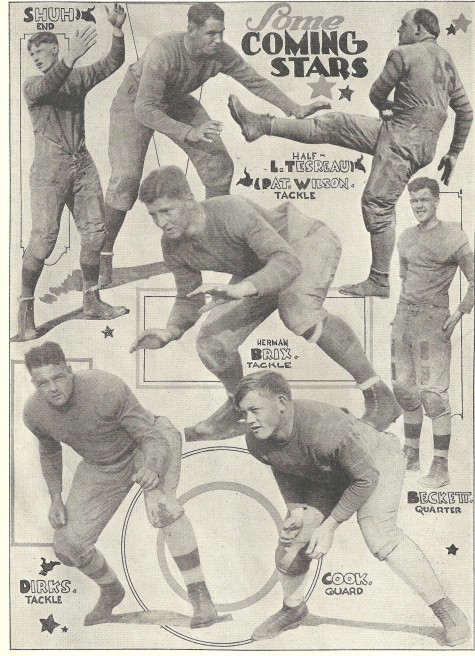
Right about that time, the university administration, in one of its periodic outbursts at an athletic department allegedly getting too big for its britches, announced that the UW would severely restrict the recruitment of football players, starting with in-state players.
There is no way to determine now if the policy was aimed directly at Bagshaw, but it certainly impacted his ability to produce winning football.
The UW squeezed Bagshaw. It got so bad that we just didnt have enough players, Chuck Carroll recalled years later.
Hardly anybody was turning out 17 or 18 guys not even enough to have a scrimmage.
Bagshaw opened the 1929 season with a 47-0 victory over Whitman, but a 6-6 tie with Montana at home on Oct. 5 took the heart out of the beleaguered coach and he announced his retirement on Oct. 23, effective at seasons end, which became a 26-6 loss to Amos Alonzo Staggs winless University of Chicago team. Bagshaw left with a record of 63226.
Almost immediately, athletic director (and former UW bookstore manager) Earl Campbell, hired the previous year, announced that the UW would spare no expense in obtaining the right coach.
Campbell tossed out the name of Notre Dames Knute Rockne as a potential successor, along with a number of other notables, including R.C. Zuppke of Illinois, C.W. Spears of Minnesota; Harry Stuhldreher (one of Notre Dames Four Horsemen) of Villanova and James Phelan of Purdue.
Bagshaw didnt stay unemployed long. Gov. Roland Hartley appointed him Supervisor of Transportation in the state Department of Public Works, on March 24, 1930, but Bagshaw wasnt long for the position.
Early in the afternoon of Oct. 3, Bagshaw left a meeting at his Olympia office, complaining of feeling uncomfortable. He intended to walk to a hotel room he rented near the Capitol Building.
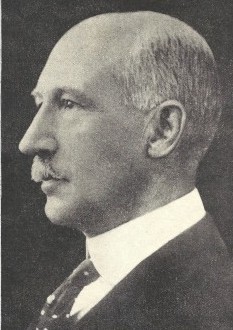
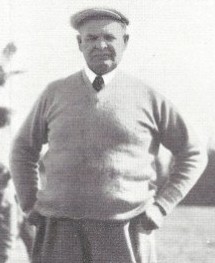
He never made it. George E. Craig, a janitor, found Bagshaw lying face down on the main floor of his office building at about 5:30 p.m. His death was attributed to a heart attack, brought on by acute indigestion, that brought on by the cucumber salad he had consumed at lunch. Bagshaw was 46.
I was shocked and grieved to learn of my friend Bagshaws untimely death, Stanford coach Pop Warner said in a statement after learning of Bagshaw’s passing. He was a square shooter, a loyal friend and a real sportsman.
But that testimonial, plus a 63-22-6 record and two Rose Bowl appearances, failed to satisfy Bagshaw’s critics.
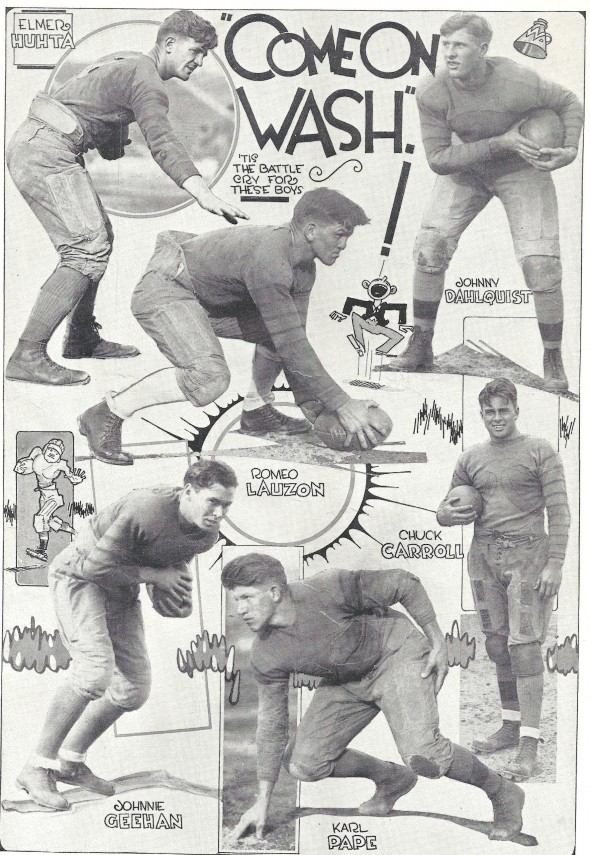
—————————————-
Check out David Eskenazis Wayback Machine Archive. David can be reached at (206) 441-1900, or at seattlesportshistory@gmail.com

1 Comment
Another great stroll down memory lane. But I am confused about Broadway High becoming Seattle Central Community College . My brother went there in the early 60’s before transferring to the UW to get his degree. At that time it was called “Edison Tech.” Later it was changed to Seattle Central Community College. It seems odd to me that its name would change 3 times since WW2. Are we talking about the same school?